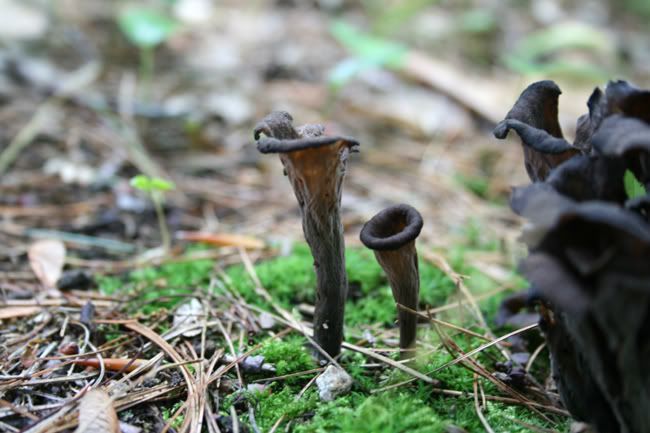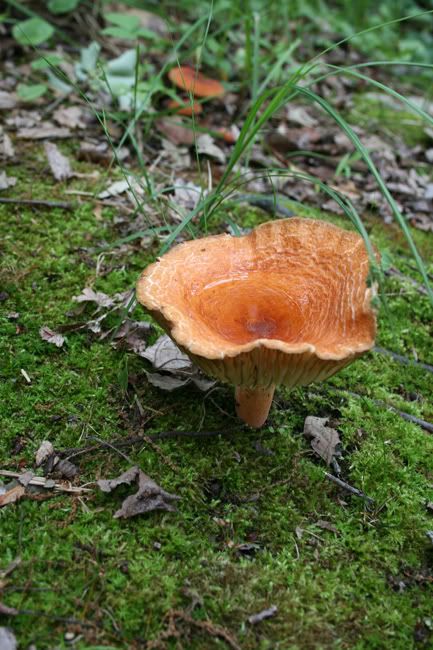Don't eat the deadly corts.
Believe it or not, only two of you have emailed or commented to me about the Horse Whisperer and his family succombing to mushroom poisoning. (I know some of you were hoping it was the Dog Whisperer.) Hopefully after some dialysis and bed rest they'll get better and their kidneys will work again some day. The lesson to be learned here is not "never eat wild mushrooms," but rather that mushroom poisoning is caused by wishful thinking.
Apparently the family thought they were collecting and eating Chanterelles (genera Cantharellus and Craterellus), a group of highly praised edible mushrooms. These are so popular that they are one of very few edible mushroom types known by name by most Americans (a notoriously mycophobic nationality) and are often found in supermarkets and restaurants. They are distinguished by being trumpet or vase shaped, and by having spore-bearing ridges that run from the cap most of the way down the stem. Judging by the warnings in the mushroom field guides, a great many people pick a great many mushrooms under the misapprehension that they are chantarelles. Because, hey, how great would that be, to find chanterelles just growing in the forest?
Unfortunately, ordinary umbrella-shaped mushrooms can be mistaken for chanterelles as they age. Especially if there has been a lot of rain, mushrooms fold upward as they get older. The underside absorbs more water than the top, so the gills swell and rise, giving a cuplike appearance to the cap, and an eager collector could easily mistake the disdended gills for the long ridges of the chanterelle. The mushrooms that Nicolas Evan's and his kin ate were Corntinarius speciosissimus, one of at least four corts that has earned the common name "deadly webcap."
Here are a couple of pictures by cottonmanifesto as examples.

Black chanterelle or "horn of plenty" Craterellus cornucopoides

A typical gilled mushroom turning concave with age and moisture.
And this picture stolen from wikipedia really muddies the waters. Would you eat these?

Apparently the family thought they were collecting and eating Chanterelles (genera Cantharellus and Craterellus), a group of highly praised edible mushrooms. These are so popular that they are one of very few edible mushroom types known by name by most Americans (a notoriously mycophobic nationality) and are often found in supermarkets and restaurants. They are distinguished by being trumpet or vase shaped, and by having spore-bearing ridges that run from the cap most of the way down the stem. Judging by the warnings in the mushroom field guides, a great many people pick a great many mushrooms under the misapprehension that they are chantarelles. Because, hey, how great would that be, to find chanterelles just growing in the forest?
Unfortunately, ordinary umbrella-shaped mushrooms can be mistaken for chanterelles as they age. Especially if there has been a lot of rain, mushrooms fold upward as they get older. The underside absorbs more water than the top, so the gills swell and rise, giving a cuplike appearance to the cap, and an eager collector could easily mistake the disdended gills for the long ridges of the chanterelle. The mushrooms that Nicolas Evan's and his kin ate were Corntinarius speciosissimus, one of at least four corts that has earned the common name "deadly webcap."
Here are a couple of pictures by cottonmanifesto as examples.

Black chanterelle or "horn of plenty" Craterellus cornucopoides

A typical gilled mushroom turning concave with age and moisture.
And this picture stolen from wikipedia really muddies the waters. Would you eat these?
